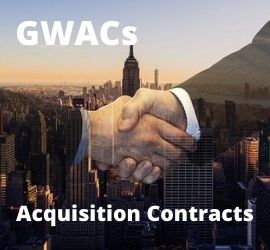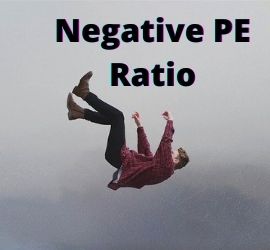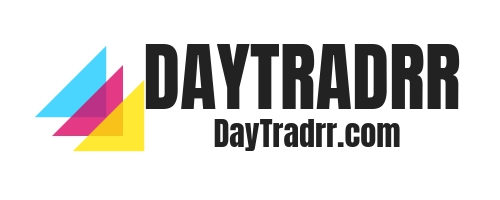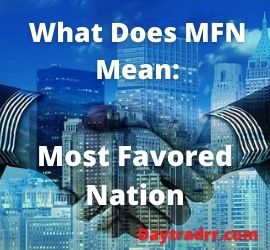GWACs – A Closer Look
The federal government is a massive bureaucracy. GWACs allow government agencies to join together and increase economies of scale to further negotiate lower prices. Their use creates an environment where a single vendor can provide product and service support to more personnel. From the government’s point of view, a single agency can evaluate a vendor for multiple inter-agency requirements. the federal government can reduce the likelihood that other agencies will have to “reinvent the wheel” by undertaking their own, separate vetting process.
GWACs provide IT solutions that include systems design, software engineering, information assurance, and enterprise architecture solutions. This is according to the U.S. General Services Administration (GSA). The GSA provides oversight, but they are not the only governmental body to utilize GWACs. NASA and the National Institute of Health (NIH) also participate in the program. These agencies carry massive purchasing power and clout. Acting together, the government can procure a wide variety of information technology solutions. Further, they can do this at a lower cost and with a wider variety of tech companies that have been approved to participate.
GWACs Prices Paid Tool
The GWACs Prices Paid Tool provides federal agencies with detailed information on how their IT dollars are spent. These tools help provide a realistic price analysis, negotiations, independent government cost estimates (IGCE), and aid in benchmarking competitive prices. Use the Life of Contract Analysis Dashboard and the Labor Analysis Dashboard is provided to assist federal agency users to conduct price analysis and negotiations. The suite of tools provides agencies with a price range from low, average, and high for each functional labor category on the Alliant and Alliant Small Business GWAC
Agency users can conduct improved market research and develop more realistic independent government cost estimates (IGCE) by using the Labor Analysis Dashboard. These provide customers a more detailed view of the prices paid on labor categories for Time and Material (T&M) and Labor Hour (LH) contract types. The Customer Interactive Prices Paid Dashboard provides federal agency users with some transparency and a detailed view into how their IT dollars are spent on the Alliant and Alliant Small Business GWAC by providing information such as how many task order awards, contract type, industry partners used, and the total amount spent. (Source: publicspendforum.net)
Types of GWACs – Government-Wide Acquisition Contracts
Stars II GWACs
The Stars II GWAC “offers access to highly qualified, certified 8(a) small disadvantaged businesses. The contract has a $22 billion program ceiling.” This is offered through the GSA. GWACs are for information technology and IT-related services. You can also buy hardware, software, and related supplies as part of an integrated solution. Leasing is prohibited under GSA’s GWACs.
Vets 2 GWACs
The VETS 2 GWAC is uniquely set aside for the exclusive use of Service-Disabled, Veteran-Owned Small Businesses (SDVOSB). VETS 2 is designed to provide a series of information technology systems for the federal government, including new and emerging technologies. The contract program ceiling is $5 billion. Vets 2 is offered through the GSA. Ordering contracting officers may include ancillary services and equipment on orders as long as the ancillary support is integral and necessary for the IT services-based solution.
Alliant 2 (A2)
The Alliant 2 GWAC provides IT solutions that can be purchased as a total package, covering hardware, software, and services. This is also offered through the GSA.
SEWP GWACs
NASA’s GWACs are known as SEWPs (Solutions for Enterprise-Wide Procurement). They provide the government with tablets, desktops, servers, IT peripherals, network equipment, storage systems, security tools, software products, cloud-based services, and more.
NITAAC
The NIH Information Technology Acquisition and Assessment Center (NITAAC) operates through the Department of Health and Human Services (HHS) and the National Institute of Health (NIH). It offers GWACs through three separate programs: CIO-SP3, CIO-SP3 Small Businesses, and CIO-CS, which is focused on IT commodities.
(Source: gsa.gov)
How to Use GWACs
Using GWACs to buy IT solutions for a specific federal agency comes with several steps.
1 Attend Training
Contracting officers must complete one of the Delegation of Procurement Authority (DPA) training options, but we highly recommend all members of the acquisition team attend a live DPA training session to have a more interactive training experience with our instructors.
2 Request Procurement Authority
Warranted contracting officers (a contracting officer appointed pursuant to FAR 1.603) must fill out this form to request a Delegation of Procurement Authority (DPA), which allows direct access to our GWACs. The DPA clearly delineates the roles and responsibilities between the GSA contracting officer and the ordering contracting officer, and complies with the Office of Management and Budget’s (OMB) executive agent designation to GSA.
3 Issue the Task Order
When using any interagency contract, your agency’s internal ordering process takes precedence. If you are the issuing agency’s ordering contracting officer, it is your responsibility to know of agency-specific policies for issuing orders on contract vehicles.
4 Request an Optional Scope Review
As a service to our customers, GSA offers free scope compatibility reviews for statements of work (SOWs). This service can help reduce the risk of protest and is a unique benefit of working with GSA. To request a scope compatibility review, please complete the online Scope Review Request Form.
5 Request an Optional Capabilities Statement
Capabilities statement requests help you identify industry partners with the desired core competencies and availability to perform on the required schedule. Capabilities statement requests can also identify whether a particular small business GWAC is appropriate for your requirement. Agencies can use a capabilities statement request for market research while planning an acquisition. We typically recommend capabilities statement requests for large dollar value and complex procurements. Capabilities statement requests are for market research only, not for selecting a particular contract holder. GSA representatives are available to help you with any part of the capabilities statement request process.
6 Report Contract Actions
The Federal Acquisition Regulation (FAR) requires customer agencies to collect and report data on their procurements to the Federal Procurement Data System (FPDS). Customer agencies receive socioeconomic credit for their task orders through the FPDS. Contracting officers must submit complete reports on required contract actions within three business days after a contract is awarded or under the guidance of your agency.
7 Review Past Performance
Agencies must prepare past performance evaluations for orders with a period of performance (including options) of more than one year, according to the Federal Acquisition Regulation (FAR) 42.15. Agencies must submit these reports electronically in the Past Performance Information Retrieval System (PPIRS) (this system has been retired). Past performance assessments must be made on an annual basis in accordance with the guidance on the Contractor Performance Assessment Reporting System (CPARS) website.
(Source: ibid)
 GWACs are government-wide acquisition contracts. They let government agencies align their needs and jointly purchase contracts for goods and services.
GWACs are government-wide acquisition contracts. They let government agencies align their needs and jointly purchase contracts for goods and services. A negative PE ratio (Price-to-Earnings) simply means that the company has negative earnings or lost money. While losing money is never a good thing, it is not always a bad thing either. It depends on a number of factors and requires a closer look.
A negative PE ratio (Price-to-Earnings) simply means that the company has negative earnings or lost money. While losing money is never a good thing, it is not always a bad thing either. It depends on a number of factors and requires a closer look.



